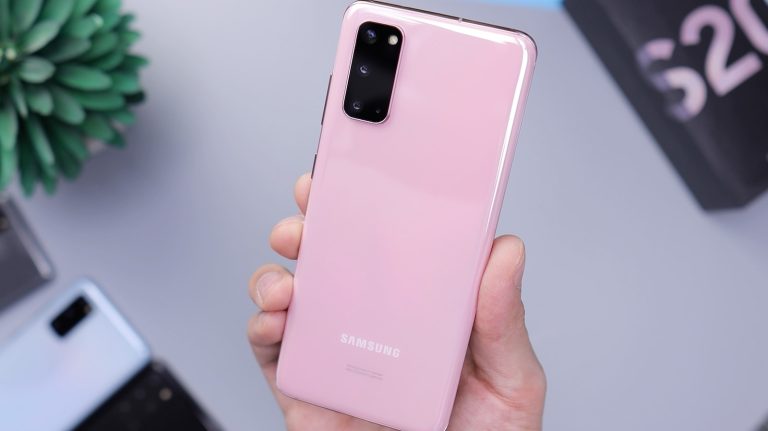The Samsung Galaxy S20, renowned for its stellar camera, impressive battery life, and sleek design, has sparked conversations among tech enthusiasts and potential buyers alike. A pivotal question that often surfaces is: “Is the Galaxy S20 waterproof?” This article aims to dissect this question, exploring the device’s official water resistance rating and what it implies for users, ensuring you have all the information needed to safeguard your investment in various environments.
Table of Contents
Smartphone Water Resistance
The terms “waterproof” and “water-resistant” are often used interchangeably, yet they bear distinct meanings. Waterproof implies absolute imperviousness to water, while water-resistant denotes the ability to resist water ingress to some degree. The International Protection (IP) rating system provides a standardized measure of electronic devices’ resistance to dust and water. For instance, an IP68 rating, commonly found in smartphones, signifies that the device can be submerged in water up to a certain depth and duration without succumbing to damage. Understanding these nuances is crucial when evaluating the Galaxy S20 waterproof capabilities and ensuring its longevity amidst exposure to the elements.
Galaxy S20: Understanding its IP Rating
The Galaxy S20 boasts an IP68 rating, a testament to its robust design and ability to withstand specific water and dust conditions. But what does this rating convey to the everyday user? Essentially, the “6” indicates optimal dust protection, while the “8” signifies the device can be submerged in up to 1.5 meters of water for a duration of up to 30 minutes without detrimental effects. However, it’s imperative to note that this does not render the Galaxy S20 waterproof in all scenarios. Factors such as water pressure, temperature, and the presence of other substances like chlorine or salt can impact the device’s resistance capabilities. Consequently, while the IP rating provides a guideline, exercising caution and adhering to the manufacturer’s advice is paramount to maintaining the device’s integrity in wet conditions.
The Galaxy S20 is adorned with an IP68 rating, indicating a high level of resistance to dust and the ability to withstand submersion in up to 1.5 meters of water for approximately 30 minutes.
Analyzing User Experiences with Galaxy S20
The Galaxy S20, while acclaimed for its water-resistant capabilities, has been subjected to numerous real-world tests to validate its IP68 rating. Users have explored its resilience through various challenges, such as underwater photography and accidental submersions. While many report satisfactory performance post-exposure to water, some have encountered issues like speaker distortion and charging interruptions. It’s essential to acknowledge that while the device showcases commendable resistance to water, it is not entirely exempt from potential malfunctions post-exposure.
Guarding the Galaxy S20 Against Water Damage
While the Galaxy S20 waterproof capabilities are notable, it is prudent to exercise caution and not perceive the device as fully waterproof. Adopting preventive measures can mitigate potential water damage and prolong the device’s lifespan. Firstly, avoid exposing the device to high-pressure water jets and submerging it in water for extended periods. Secondly, ensure that all ports and covers are firmly sealed before any contact with water. Lastly, refrain from operating the device while it is wet and allow it to dry thoroughly to prevent internal damage. Adopting a proactive approach towards safeguarding your Galaxy S20 can circumvent unexpected mishaps and preserve its optimal functionality amidst various environmental conditions.
What To Do If Your Galaxy S20 Gets Wet?
When your Galaxy S20 encounters an unexpected aquatic adventure, immediate action is pivotal. Firstly, retrieve the device from the water promptly and power it down. Gently shake it to remove excess water from ports and wipe it dry with a clean, lint-free cloth. Avoid using heat sources to expedite drying. Inspect for operational glitches and, if possible, place it in a bag of silica gel or uncooked rice to absorb residual moisture.
| Do’s | Don’ts |
|---|---|
| Power down immediately after water exposure | Do not charge the device while it’s wet |
| Gently shake to remove excess water | Avoid exposing to high-pressure water jets |
| Wipe with a lint-free cloth | Refrain from using heat sources for drying |
| Use silica gel for absorbing internal moisture | Do not press buttons while the device is wet |
FAQs
What is the IP rating of the Galaxy S20?
The Galaxy S20 is adorned with an IP68 rating, indicating a high level of resistance to dust and the ability to withstand submersion in up to 1.5 meters of water for approximately 30 minutes.
Can I take photos underwater with the Galaxy S20?
While the Galaxy S20 can resist water to a certain extent, taking photos underwater might expose it to pressure levels beyond its certified resistance, potentially compromising its integrity.
How long can the Galaxy S20 stay submerged in water?
The Galaxy S20 is rated to endure submersion in up to 1.5 meters of water for a maximum of 30 minutes, although minimizing underwater duration is advised to safeguard its functionality.
What should I avoid to ensure my Galaxy S20 remains water-resistant?
To maintain its water resistance, avoid exposing the Galaxy S20 to saltwater, chlorinated pools, and ensure that all ports are securely closed when in proximity to water.
Final Thoughts
In summary, the Galaxy S20, with its IP68 rating, offers a commendable degree of water resistance, though it is not entirely waterproof. Ensuring mindful usage, adhering to precautionary measures, and understanding its limitations will enable you to explore its capabilities while safeguarding its longevity amidst aquatic environments.


Please upgrade our s20+ to version 13